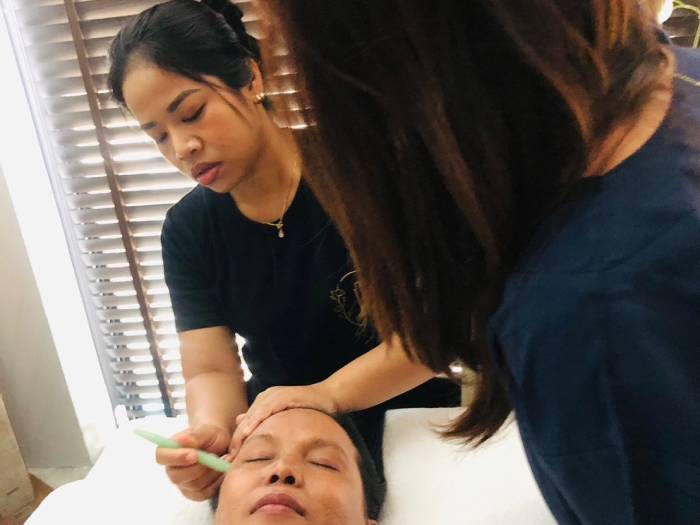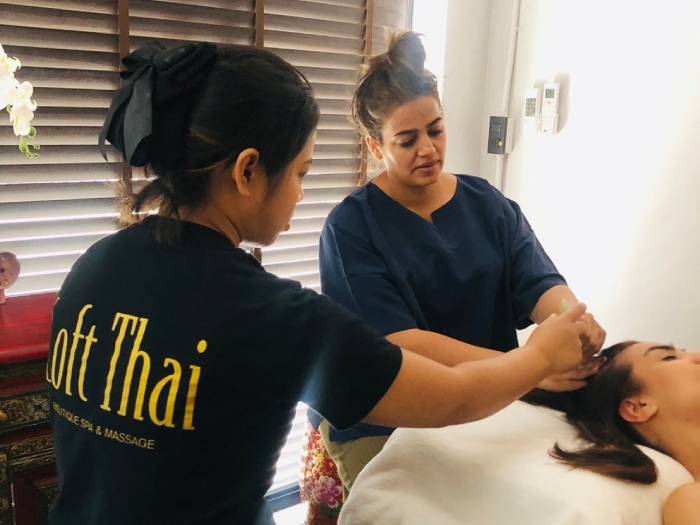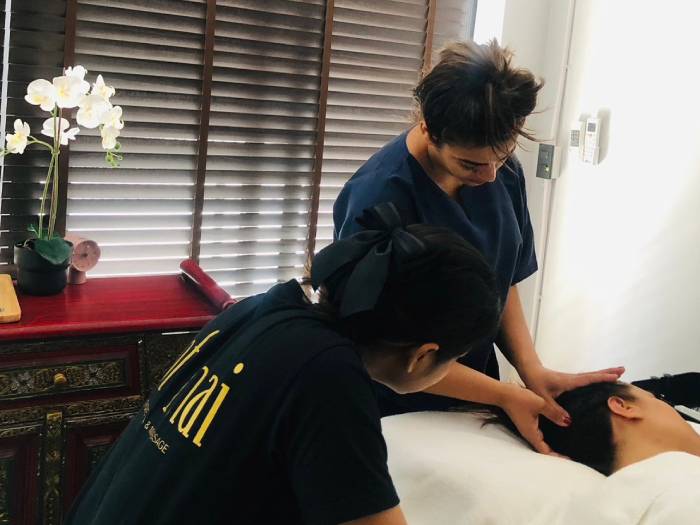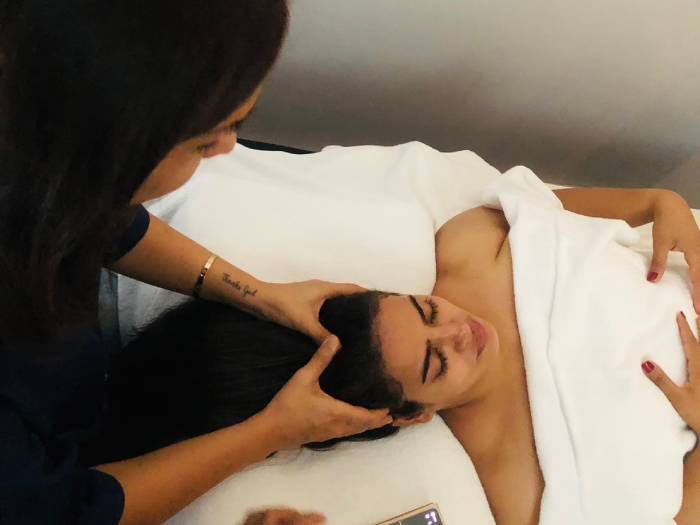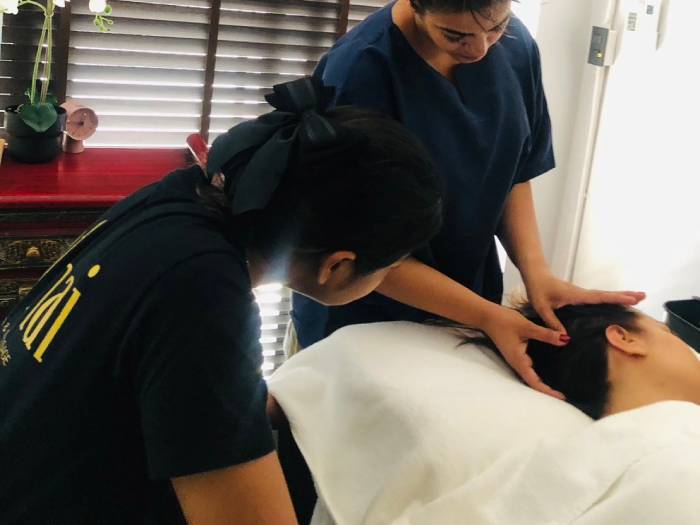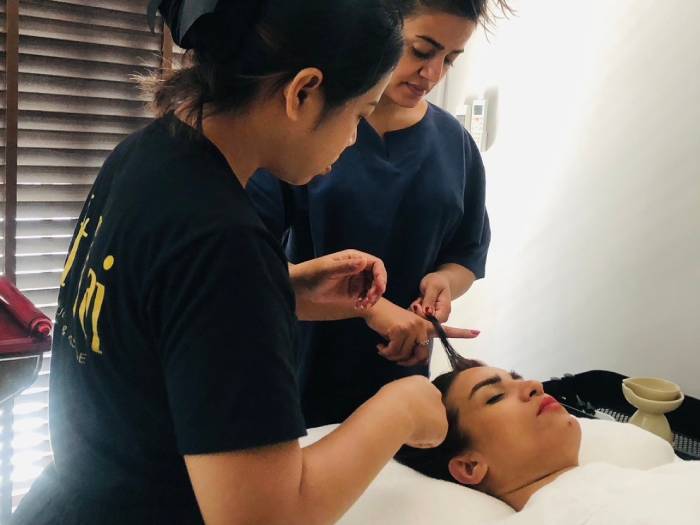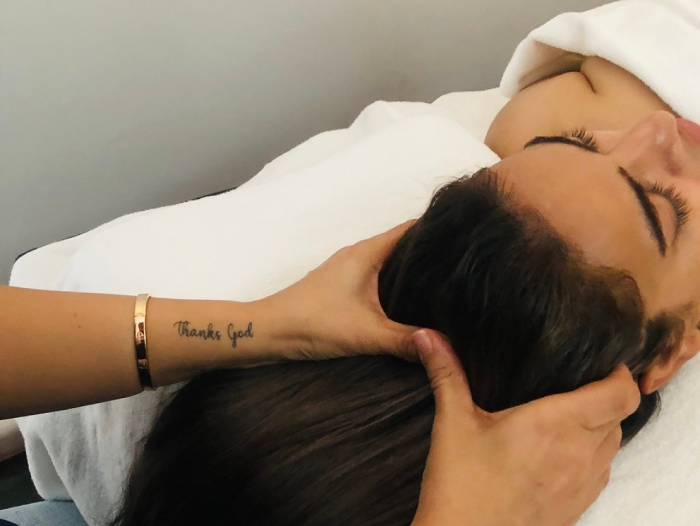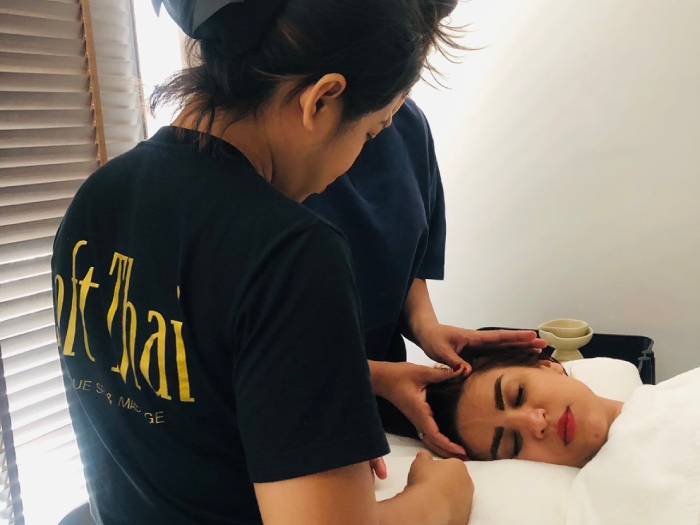A Sacred Journey through the Head, Mind, and Spirit
The Indian Head Therapy Course offered by our massage school in Bangkok is a deeply immersive and therapeutic training designed to teach students the ancient art of Champissage—a traditional Indian head massage practice that nurtures both physical well-being and emotional balance. This unique therapy, rooted in Ayurvedic principles, works not only on the scalp but also on the upper back, shoulders, neck, ears, and face, combining physical techniques with an energetic and spiritual dimension.
In today’s fast-paced and stress-heavy world, Indian Head Therapy offers a profound sense of calm and grounding, making it one of the most accessible and powerful tools in the wellness and massage industry. This course introduces students to the origin and philosophy of the practice, the sequence of hands-on techniques, pressure point activation, the flow of prana (life force), and the holistic benefits of integrating this treatment into spa, salon, or home settings.
Whether you are a practicing massage therapist, yoga teacher, energy healer, salon professional, or wellness beginner, this course will provide you with both the techniques and the inner awareness needed to practice Indian Head Massage with skill, sensitivity, and heart.
Why Study in Bangkok, and Why Sukhumvit?
Bangkok, the heart of Thailand, is a city that gracefully fuses tradition with innovation, and healing with modern wellness. Known worldwide for its massage culture and therapeutic heritage, Bangkok is an international hub for students seeking high-quality massage education. It is here that Eastern and Western healing philosophies harmoniously coexist.
Our school is situated in Sukhumvit, one of the most vibrant, diverse, and wellness-driven districts in Bangkok. This area is filled with spa boutiques, yoga studios, herbal apothecaries, international cafés, and cultural hubs. Easily connected by BTS Skytrain and comfortably cosmopolitan, Sukhumvit offers an atmosphere of balance—making it the perfect location to study a course that balances body, mind, and energy.
Training in Sukhumvit places you at the crossroads of tradition and opportunity. You will not only receive professional instruction but also experience the energy of a neighborhood that reflects the global evolution of wellness. Here, students can also explore complementary practices such as Thai Massage, Facial Treatment, Aroma Oil Massage, and Head Spa Massage, enriching their overall knowledge and skills.
The Story and Origins of Indian Head Massage
Indian Head Massage, traditionally known as Champi or Champissage, traces its roots back over 3,000 years to Ayurveda, India’s ancient holistic health system. In traditional Indian families, head massage was a ritual passed down through generations, used to promote relaxation, stimulate hair growth, strengthen the nervous system, and encourage spiritual balance.
Barbers in India offered variations of head massage during haircuts, and in homes, family members massaged one another to foster connection, relieve tension, and bring healing. The term “shampoo” actually derives from the Hindi word “champi,” meaning to press or massage.
In the 1970s and 1980s, Indian Head Massage was formalized and brought to Western countries, particularly the UK, where it became known as a seated, oil-free massage suitable for both clinical and spa settings. It grew into a widely practiced modality that enhances not only physical relief from tension but also mental clarity and emotional ease.
In this course, students explore both the traditional Ayurvedic roots and the contemporary therapeutic applications of Indian Head Massage, combining energy work, pressure point therapy, and physical techniques into a holistic treatment model.
Course Preparation and Training Environment
Our Indian Head Therapy Course is designed to be inclusive, professional, and immersive. Students of all levels are welcome. No prior massage experience is required, though it is especially beneficial for practitioners of Thai massage, aromatherapy, beauty therapy, and yoga teaching.
The training takes place in a peaceful and well-equipped space that emulates a high-end spa environment. The room is quiet, calming, and designed for hands-on practice in pairs. Instructors provide close supervision, guided demonstrations, and plenty of time for each student to practice both giving and receiving treatments.
Students are encouraged to wear loose-fitting, comfortable spa attire. Since the practice involves seated massage, students should avoid restrictive clothing and jewelry. Hair should be tied back neatly, and nails kept short. Personal hygiene and mindfulness are essential components of the learning experience.
Training Tools and Products
While Indian Head Massage can be practiced with or without oils, students will be introduced to the use of Ayurvedic oils, herbal blends, and aromatherapy oils to enhance the treatment’s benefits. Oils such as coconut, sesame, amla, or Brahmi oil are explored for their calming, rejuvenating, and nourishing effects on the scalp and nervous system.
Other items used include:
- Clean towels or shawls for client comfort
- Massage chairs or straight-backed chairs with arm and neck support
- Small bowls for oil warming
- Hot towels for post-treatment comfort (optional)
Students are also introduced to the Chakra system, understanding how each chakra corresponds with areas of the head and upper body, and how Indian Head Massage can help balance them.
Step-by-Step Training – The Ritual of Healing Touch
The Indian Head Therapy Course is structured to build knowledge and confidence progressively. Each session includes theoretical exploration, instructor demonstration, and practical application.
Training begins with understanding the philosophy of Ayurveda, including the concepts of Doshas (Vata, Pitta, Kapha), the role of energy pathways, and the flow of prana. Students learn how stress and imbalance in the mind or emotions can manifest as physical tension—particularly in the scalp, neck, and shoulders.
The practical sequence then begins:
1. Seated Position and Posture
The client remains fully clothed and seated comfortably in a chair. The therapist stands or sits behind the client, beginning the session with a moment of grounding and intention. The importance of breath, presence, and gentle energy transfer is emphasized from the start.
2. Shoulder and Upper Back Massage
Students learn how to warm the muscles of the shoulders and upper back through kneading, rolling, and compression techniques. These movements prepare the client for deeper relaxation and encourage release of stored emotional and physical tension.
3. Neck and Cervical Release
The neck, often a site of chronic tension from posture and stress, is worked using circular movements, gentle tilting, and muscle tracing. This helps loosen the cervical spine and improve blood flow to the head.
4. Scalp Massage Techniques
This is the heart of the treatment. Students are taught various rhythmic techniques including effleurage, tapping, friction, pulling, rotating, and pressure point stimulation on the scalp. These techniques stimulate circulation, release endorphins, and awaken the senses.
Different hand positions are used to balance energy and soothe the mind. Oil application may be used at this stage if the client desires.
5. Facial Pressure Point Stimulation
Students are introduced to key Marma points—vital energy points on the face and temples. Gentle stimulation of these points enhances lymphatic drainage, reduces eye fatigue, and promotes facial glow.
6. Ear and Jaw Relaxation
The ears and jaw hold tension, particularly for those who clench their teeth or suffer from TMJ. Students learn how to release this tension using gentle circular movements and traction, often resulting in deep emotional release.
7. Chakra Balancing and Energy Closing
Finally, students are guided through a subtle energetic closure, which may include Chakra brushing, silence, or holding the crown gently. The therapist allows the body to integrate the healing work, bringing the session to a calm and centered conclusion.
Each movement is taught with intention, flow, and awareness, ensuring students don’t just learn technique but embody the sacredness of the practice.
Safety, Contraindications, and Client Screening
Although Indian Head Massage is gentle and non-invasive, there are situations where caution or avoidance is necessary. Students are trained to conduct a short intake assessment before the session to ensure safety.
Contraindications include:
- Recent head, neck, or spine injury
- Severe migraines or vertigo
- Open wounds, rashes, or skin infections on the scalp or face
- Contagious illnesses
- Epilepsy (without physician clearance)
- Recent surgery or medical procedures on the upper body
- High or uncontrolled blood pressure
Students are taught how to modify the session for clients with sensitivities or limitations and to know when to refer clients to a medical professional before proceeding.
Hygiene protocols, oil allergy checks, and client consent procedures are part of the course standards.
Benefits of Indian Head Massage
Indian Head Therapy offers a broad range of benefits, including physical, emotional, and energetic results. Clients often report:
- Relief from headaches, migraines, and jaw tension
- Improved sleep and reduced insomnia
- Decreased anxiety and emotional stress
- Increased mental clarity and focus
- Softer, healthier scalp and hair
- Enhanced lymphatic flow and facial tone
- A sense of inner peace and spiritual alignment
Therapists benefit from offering a high-value, low-fatigue treatment that can be integrated into spa menus, hair salons, wellness retreats, and even office or mobile settings.
Student Recommendations
Students are encouraged to practice daily, on different body types and scalp textures, to refine sensitivity and rhythm. Receiving multiple treatments during the course also builds intuition and awareness of the client experience.
We recommend journaling, meditating, or engaging in light yoga during the course to keep your energy clear and receptive.
Those who combine Indian Head Massage with Ayurvedic studies, Thai massage, aromatherapy, or facial massage will find it complements and elevates their practice beautifully.
What You Can Do After This Course
Upon successful completion, students receive a Certificate in Indian Head Therapy, validating their ability to provide the treatment professionally.
Career pathways include:
- Offering the service in spas, salons, or mobile wellness settings
- Integrating it into yoga or meditation retreats
- Providing on-site stress relief in office environments
- Offering energy balancing or relaxation packages
- Hosting workshops or retreats focused on self-care and energy healing
This technique is simple to deliver, highly effective, and universally appreciated, making it a perfect skill for both solo practitioners and wellness teams.
Healing through the Crown, Reconnecting to the Self
The Indian Head Therapy Course is more than just a massage class—it is a journey into a healing tradition that touches the deepest parts of the nervous system, clears the clutter of the mind, and reconnects us with our inner stillness. Practicing Indian Head Massage is a sacred act, combining skill with presence, and touch with energy.
Training in Sukhumvit, Bangkok gives students access to world-class instruction, global wellness perspectives, and a community that honors healing as a lifestyle. Whether you’re new to wellness or a seasoned therapist, this course will equip you with a timeless tool of care and calm.
Please note: The content of this course description is provided for informational purposes and serves as a general guideline. Training duration, structure, and technique may vary depending on the student’s background, goals, group dynamics, and instructor assessment. Each session is adapted to ensure an optimal learning experience tailored to the student’s path.
If you would like to experience the Indian Head Therapy performed by a professional therapist, we highly recommend booking a session with our partner Loft Thai Boutique Spa & Massage. Their experienced team offers authentic treatments in a serene and luxurious setting. To explore and book your session, please visit the link below. All students from Nuad Thai School are entitled to an exclusive 20% discount on all treatments.
Pricing
Packages made for anyone!
Thai Discover
- 4-hours group course
- Instructor & Model
- Introduction & Theory
- Thai Massage Practice
- School Certification
Thai Beginner
- 4-hours private course
- Instructor & Model
- Introduction & Theory
- Thai Massage Practice
- School Certification
Thai Professional
- 150 hours private course
- Instructor & Model
- Professional Training Course
- Custom or Tailor-Made
- Official THAI UTTS Certification


